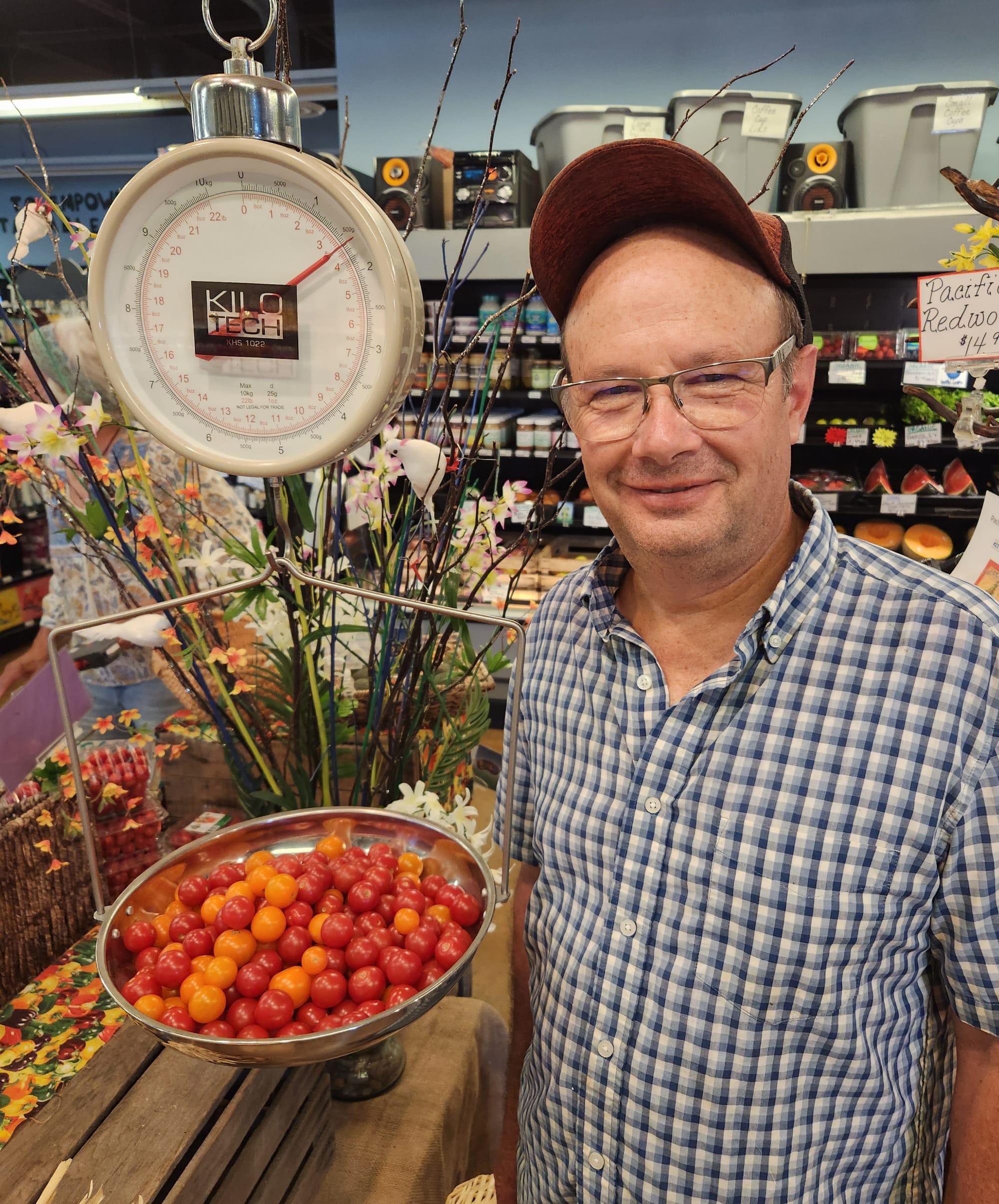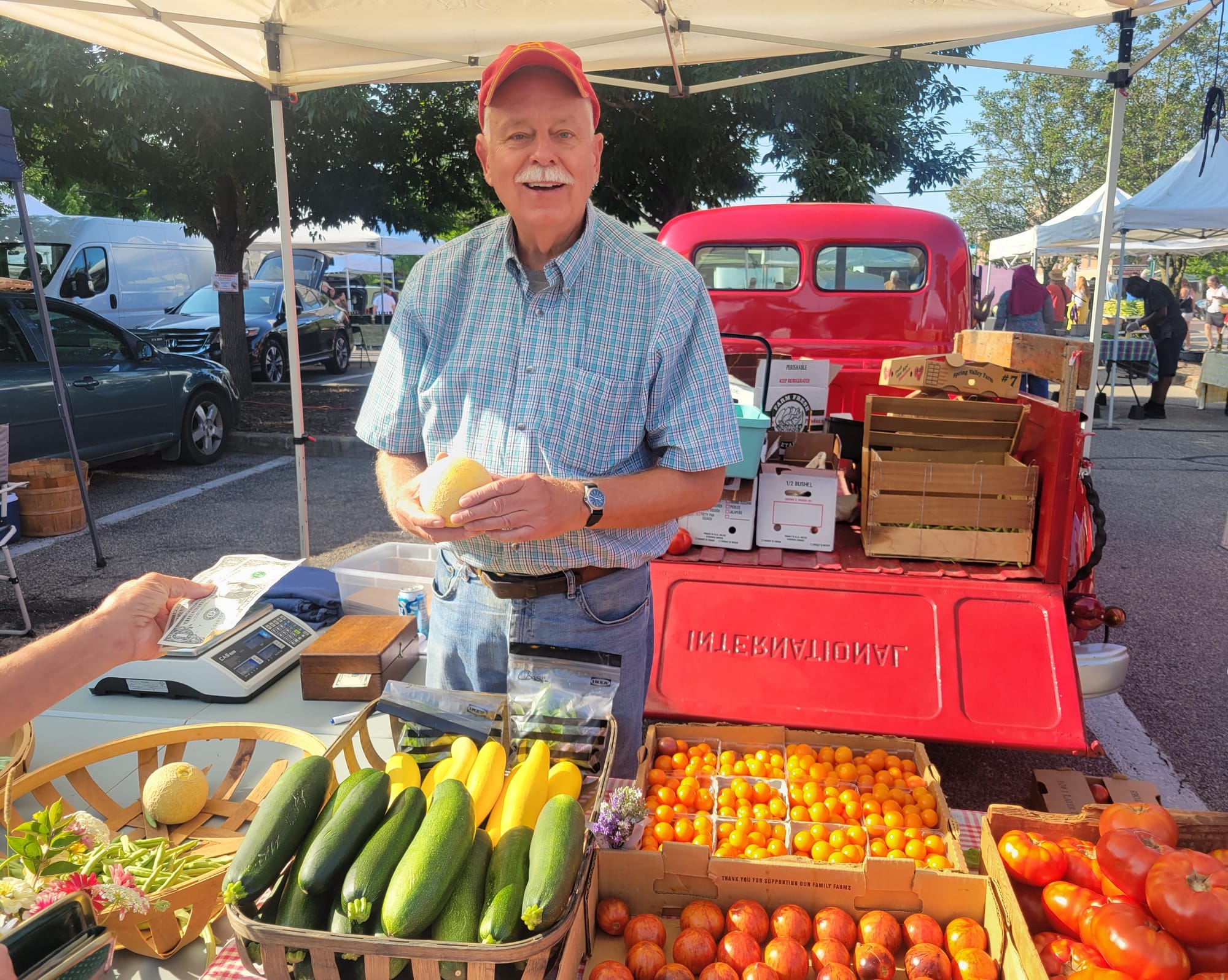On My Plate: Tomatoes
I usually toss the farmers market tomatoes in my shopping bag and lose track of the grower and variety. Last Saturday, I selected five varieties of tomatoes and carefully placed them in individual bags with the name of the grower and variety.

Tomatoes of all shapes, sizes and colors are ubiquitous at the Oxford Farmers Market this time of year. It seems like everyone I know grows their own tomatoes at home. I admire their dedication, but that doesn’t work at our house, which is located in deep woods without direct sunlight, and it’s more fun to select a variety of tomatoes than to grow only one or two varieties.
I usually toss the farmers market tomatoes in my shopping bag and lose track of the grower and variety. Last Saturday, I selected five varieties of tomatoes and carefully placed them in individual bags with the name of the grower and variety. I purposely selected a couple with “conventional” appearances and a couple of unusual ones.
Just like people, every tomato has a fascinating heritage and family tree, or if I may, “family bush.” So here are the backstories for five of them.

The most conventional-looking tomato I chose was Greg Hamm’s Chef’s Choice: a round, red specimen with a two and a half-inch diameter. Its immediate family story seemed straightforward: a first-generation hybrid introduced around a decade ago by a breeder named Brad Gates of Wild Boar Farms in California. But the backstory got interesting.
According to the internet, Gates is known among tomato growers as the “Willy Wonka” of tomato breeding for his “meticulous” practice of open pollination to create new varieties. Gates bred Chef’s Choice from an heirloom called Amana Orange, which is attributed to a Bradenton, Florida, farmer named Gary Staley, who named it after his employer (the Amana Corporation).
Red Deuce, a hybrid grown at Jennifer Bayne’s 7 Wonders Farm, is a conventional-looking red tomato, with one notable exception: it’s huge, with a diameter of more than 4 inches. Red Deuce was developed by Johnny’s Selected Seeds, a seed company started in 1973 by a 22-year-old named Rob Johnston, Jr., in his attic. In 2006, Johnston turned the company into a trust, in which the employees own 100% of the stock. Jennifer doesn’t know why her Red Deuces kept growing ever larger.
The other three tomatoes I grabbed most recently are all heirlooms. The nation’s largest bank of heirloom seeds, including tomatoes, are preserved and shared through Seed Savers Exchange, a nonprofit corporation founded in 1975 by Kent and Diane Ott Whealy at Heritage Farm in Decorah, Iowa. According to the Seed Savers Exchange website, the collection started when Diane’s grandfather, Baptist John Ott, gave her the seeds of a tomato and a morning glory that he had brought with him from Bavaria, Germany, when he immigrated to Iowa in 1884. The collection now houses the seeds of 20,000 different heirlooms.
Queen of the Night, an heirloom offered by Craig and Sharon Harkrider’s Stoney Hedgerow Farm, is a dark-skinned variety, around 2 inches in diameter, originating along the Rhine River in Germany. I haven’t found an exotic story about its origin.

Brad’s Atomic is an elongated, purple 2-inch-long heirloom grown by Miami Farms’ Jim Gieringer. The tomato’s breeder, Brad, is none other than Brad Gates, the “Willy Wonka” introduced earlier.
Finally, the Harkriders’ 3-inch-long, purple plum-shaped heirloom is named Ukrainian Purple. The seeds were introduced to the United States by Frederick Ineman of Ravenna, Ohio, who, the internet reports, received the seeds from his Aunt Irma Henkel who lived in Ukraine.
I thought that I should compare the taste of the five, and I can write that all five are juicy and full-flavored.
James Rubenstein is president of the Board of Directors for the Oxford Free Press and professor emeritus of geography at Miami University.




